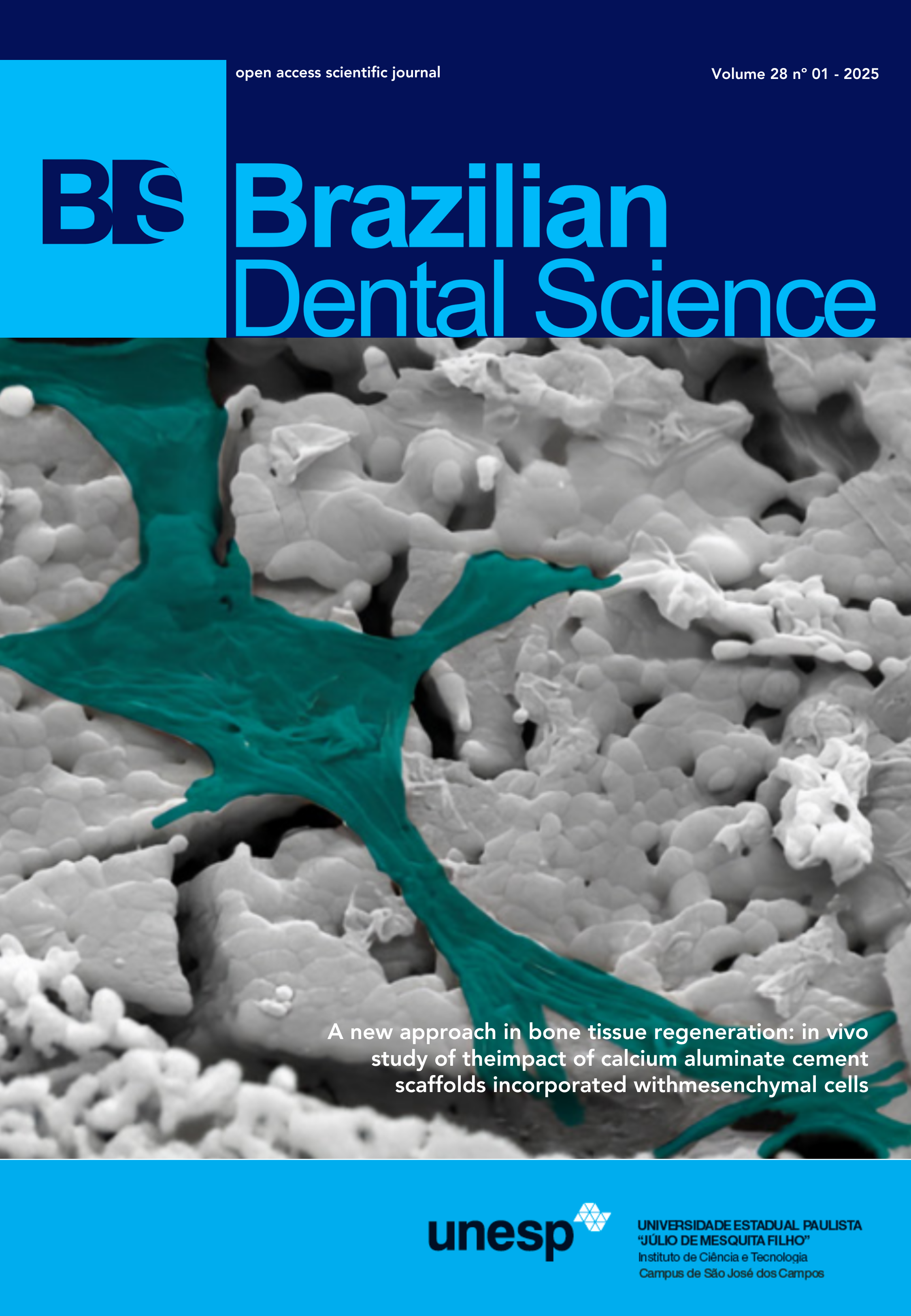Wear of two different attachment systems in implant supported mandibular overdentures: a clinical comparative study
DOI:
https://doi.org/10.4322/bds.2025.e4609Abstract
Introduction: The stud attachment is regarded as one of the most popular systems for the retention of removable overdentures. A new type of PEEK attachment system, such as Novaloc, may have a good prognosis compared to other systems. Aim of the study: The purpose of this clinical study is to compare two different attachment systems, Novaloc and Locator, regarding wear resistance under implant-supported overdentures. Material and Methods: The research sample consisted of 10 patients with complete lower and upper edentulous. A complete lower denture was made supported by two implants, with a conventional complete denture for each patient. The patients were divided equally into Group 1: Novaloc attachment system. Group 2: Locator attachment system. The wear measurements were done using a digital stereomicroscope and repeated after 4, 8, and 12 months. The data was collected, calculated, and statistically analyzed using the SPSS program. Results: According to One-way ANOVAs and independent T-test and throughout the observation period (P-Value > 0.05). The results showed the presence of wear in both attachment systems, but with statistically significant differences, as the amount of wear was greater in the Locator group compared to the Novaloc group. Conclusion: Under the circumstances of this study, it can be concluded that the Novaloc attachment system is superior to the Locator in terms of its resistance to wear during the observation period of 1 year when compared to the Locator system.
KEYWORDS
Attachments; Locator; Novaloc; Nylon; Overdenture; PEEK; Wear.
Downloads
Published
How to Cite
Issue
Section
License
Copyright (c) 2025 Brazilian Dental Science

This work is licensed under a Creative Commons Attribution 4.0 International License.
Brazilian Dental Science uses the Creative Commons (CC-BY 4.0) license, thus preserving the integrity of articles in an open access environment. The journal allows the author to retain publishing rights without restrictions.
=================




























